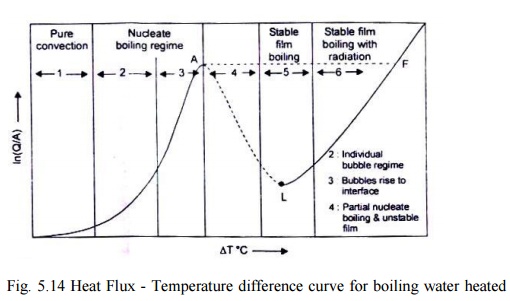Chapter: Mechanical : Heat and Mass Transfer : Phase Change Heat Transfer and Heat Exchangers
Boiling Curve - Operating Constraints
Boiling Curve - Operating Constraints
The boiling curve,
shown in Fig. , is based on the assumption that the temperature of the
heated surface can be maintained at the desired value. In that case, it would
be possible to operate the vapour producing system at the point of maximum flux
with nucleate boiling. If the heat flux instead of the surface temperature, is
the independent variable and it IS desired to operate the system at the point
of maximum flux, it is just possible that a slight increase in the heat flux
will increase the surface temperature substantially. And, the equilibrium will
be established at point F. If the material of the heating element has its
melting point temperature lower than the temperature at the equilibrium point
F, the heating element will melt.

Factors Affecting Nucleate Boiling
Related Topics